Search

Publications
Caspian Ц Trans-Persian railway line: the forecasted parameters of the North-South ITC segments until 2030

The long-expected event of the negotiations around the North-South International Transportation Corridor (ITC) took place on 19 May 2023: Russia and Iran signed the Agreement of funding the design and construction activities and about the supplies of goods and services for creating Rasht Ц Astara railway.
Let us remind here, that in October 2017 during the visit of Iranian official delegation comprising representatives of the Central Bank, the Ministry of Economy and Finance, and Iranian Railways to Baku, Azerbaijan agreed to grant an intergovernmental facility of USD 500 mln to build this particular ITC segment (162 km). However, the follow-up pressure of the US State Department on Baku increased the risks of blocking this deal. In the same period, due to similar circumstances, the RF Government hesitated to continue the Russian-Iranian Oil-for-Goods Program.
The time of wavering is far behind
The year of 2022 was quite definitive in terms of putting the groups of regional allies and partners in perspective Ц the time of wavering was left far behind.
Russia will grant an intergovernmental facility of EUR 1.3 bn to build this most difficult North-South ITC segment from the engineering standpoint. The total project cost given the first phase throughput capacity of up to 15 mln tons per year will make EUR 1.6 bn (additional funds are to be collected by a pool of Russian infrastructure investment banks).
The railway design assumes the combination and parallel laying of tracks with gauge of 1,520 mm and 1,435 mm to assure the possibility of using both types of rolling stock of the region. All the work is to be completed by the end of 2027. The first groups of Russian surveyors and prospectors went to Iran in the fall of 2022. The master contract will be available for signing by the main contractors in the nearest months. The main working cycle will start upon completion of the design documents.
Russian and Iranian companies have already accumulated certain experience in big infrastructural construction projects associated with nuclear power plant in Bushehr. Based on that, some materials (cement, sand, gravel aggregate) will be bought in Iran, because they are much cheaper there. More sophisticated items (rails, platforms foundations made of reinforced concrete, ties, structural elements of tunnels, instrumentation, rolling stock traffic signaling arrangements Ц all of them belong to the major portion of funding), will be, most likely, produced by Russian manufacturers.
Upfront investment and throughput of Caspian segments
The North-South ITC is a developing integral economic phenomenon arising at the interface of major infrastructure of various transport modes, logistic services networks, cooperation of industrial regions and free economic zones (FEZ) along the major railway lines.
According to a number of experts, the North-South ITC has good development potential as a project of trans-regional integration of groups of states interacting with the free trade zone of EUEU/CIS.
According to the Eurasian Development Bank, which collected a database of potential and current investment projects associated with the North-South ITC development, about one hundred of different transportation, logistical and industrial projects with a cumulative budget over USD 38 bn may be implemented by 2030.
The North-South ITC is a junction corridor for two sub-regional foreign trade areas of Russia within the «close neighborhood» belt: in 2022, Russia increased the turnover with the Central Asian countries by 20% up to USD 41 bn; and Russian turnover with the South Caucasus countries reached USD 10.2 bn. In the same time, Russian FDI into the economy of the Central Asian countries made over USD 3.6 bn, and the cumulative investment starting from 2015 exceeded USD 25 bn.
A wave of investment into the North-South ITC is expected starting from the second half of this year, it will go in progressing stages across 2020-ies and will comprise several components:
- Russian inter-governmental facilities (within a EUR 1.3 bn package);
- Investment into Russian main infrastructural network. The transportation corridor includes the on-going construction of Derbent railway checkpoint and of the motorways bypassing Astrakhan, Derbent and Khasavyurt, as well as upgrade of the vehiclesТ checkpoints in Verkhniy Lars and Yarag Ц Kazmalyar;
- Investment by Russian infrastructure investment banks: here we can expect contributions from VTB and Gazprom Bank, which have their own interests in the North-South ITC regions (in particular, Gazprom Bank is developing a chain of gas fueling stations in Dagestan and other Russian regions along the ITC route);
- Expected investment by major Russian transportation/logistical companies Delo and Fesco, which announced their interest in the route;
- Investment by Caspian countries (railway and motorway companies). At the EAEU summit, President Tokayev announced the initiative of Kazakhstan: to launch high-speed freight trains along the Chelyabinsk Ц Bolashak Ц Iran railway line of 2,873 km length (creating a freight hub in Chelyabinsk). Kazakhstan also plans to debottleneck Beyneu Ц Manguistau railway and Beyneu Ц Shalkar motorway;
- Azebaijan plans to upgrade the railway line between Absheron node and Astara, in particular Ц to move the along-shore railway line in Astara and Lyankaran regions by passing the touristic zones and city quarters. In addition, the revival of Zangezur corridor (using the railway hub in the city of Julfa in Naxcivan Autonomous Republic of Azerbaijan) with potential throughput of over 5 mtpa of cargoes also should be included into the total investment into the North-South ITC;
- Investment by the countries of the North-South ITC УSouthern PortalФ. We are talking here about the interest on behalf of UAE, Qatar, Saudi Arabia, India and Pakistan;
- Investment by PRC may soon appear within the investment pool, as well Ц as an interface with the trans-regional project «One Belt, One Road». Partnership with China is one of the key options for further development of Eurasian Transportation Environment, especially given that the communications network East-West and North-South will be designed and built as a single transportation, economic, industrial and investment organism.
The first options for these blocks will be most likely presented at the Petersburg International Economic Forum (PIEF) Ц 2023, and then will be progressing every year.
The estimates of the first investment phase and of the railway throughput vary in the range from 15 mln tons to 60 mln tons per year depending on specific industry agencies and companies: the builders are based on the realities of government funding, investors in the transportation sector talk about bigger potential with account of the experience of operating such major projects as Baikal-Amur and Trans-Siberian railways.
It is obvious that big investment into main railways infrastructure will facilitate unlocking of the North-South ITC potential and activate the development of businesses along the route.
According to the estimates by Marat Khusnullin, the Deputy Chair of the RF Government, during the period from 2022 to 2030, Russia will invest circa RUB 280 bn into construction of the North-South ITC, which will allow for increasing the freight turnover on the route to 35 mln tons per year. To compare: the costs of building the electric grids for the Eastern Domain (railways of East Siberia and Far East) are estimated as RUB 260 bn until 2026.
The leading transportation specialist of the RF Sergey Shishkarev, the founder of Delo company, believes that the North-South ITC throughput may be increased up to 60 mln tons per year by 2030, and up to 100 mln tons per year by 2050. His estimates are based on summarizing the flows of grain sent to Iran and to the Middle East markets (about 10-15 mln tons of grain of all types from Russia and Kazakhstan). As for container traffic, he is convinced that by 2030 the North-South ITC will be transporting about 1 mln TEUs (analogue of 20-feet container), by 2050 Ц 2 mln TEUs, which will be equivalent to 36 mln tons of freight.
According to specialists from the Institute of Economics of the Russian Academy of Sciences, by 2030, grain, fertilizers (urea), fuel and lubricants, polymers, petrochemical and gas-chemical products, car assembly components, agriproducts and a wide range of consumer goods in containers will constitute the most meaningful part of freight turnover of the North-South ITC. That is why the estimated investment into the North-South infrastructure by 2030 may be increased up to RUB 500 bn.
An outlet to cooperation with the Global South countries
Changes in Russian industrial agglomerations and transportation hubs should be reviewed in the focus of the North-South ITC effects.
The systemic conflict of Russia with Euro-Atlantic community stipulated the shift of the transportation axis of the Russian part of the North-South ITC (from the Black Sea shore and Azov-Don basin via Rostov and Voronezh to Moscow and Saint-Petersburg) to the East Ц from Southern Caspian regions to the North up the Volga River with further division into Eastern and Western directions.
Volgograd Region, Samara Region and the Republic of Tatarstan will become the back-bone regions of new industrial agglomerations of Russia. In fact, they already have well-developed chemical industry, oil refining and gas processing sectors.
In particular, the advantages of Samara hub are in available railway access to Caspian routes, to Kazakhstan and Azerbaijan, and Astrakhan Region in close proximity. Many lines going to the East (Urals, Siberia and further on to the Pacific Ocean) are connected to Kuybyshev railway. The main portion of automotive East-West traffic goes through Samara region. Major logistic hubs Yandex Market, OZON, ’5 Group are either operational or in the final stage of construction, and Wildberries distribution center will be launched by the end of 2023.
Hence, Samara, Saratov and Astrakhan Regions, the Republics of Tatarstan and Dagestan are becoming the highest priority in geo-economic planning for the Russian Federation taking into account that today the main overland communication lines and transportation flows in the European part of Russia are making a turn towards its Southern neighbors down to the Persian Gulf.
The Caspian Ц Trans-Persian railway line (three Caspian routes of the North-South ITC) will become to only a very important part of infrastructure for Russian foreign trade, but also a symbol of an impressing turn now being implemented by the Russian Federation within a horizon of several decades. The gas pipelines to Europe became a symbol of convergence of the two systems, a symbol of detente and further rapprochement between Russia and the West. The North-South MTC is becoming the «gateway for handshake and cooperation» with the Global South countries: from Middle East and Africa to South and South-East Asia. Just like Trans-Siberian and Baikal-Amur railways, this is the story for the decades to come.
Firstly, thanks to this project a shift of industrial and business zones of Russia from the area of Russian-Ukrainian border (along the Don highway) to the Volga River basin, which was long-awaited for by a number of economists, will be implemented finally.
Secondly, the potential of the Caspian Five will be fully realized.
And finally, thirdly, Russia will get full access to the Persian Gulf ports, which will decrease economic and geo-political pressure on the Russian ports of the Azov Sea and the Black Sea.
Hence, the North-South corridor will become the biggest geo-political and geo-economic infrastructure project of the current decade, the basis for further trans-regional expansion of the EAEU partnership.







